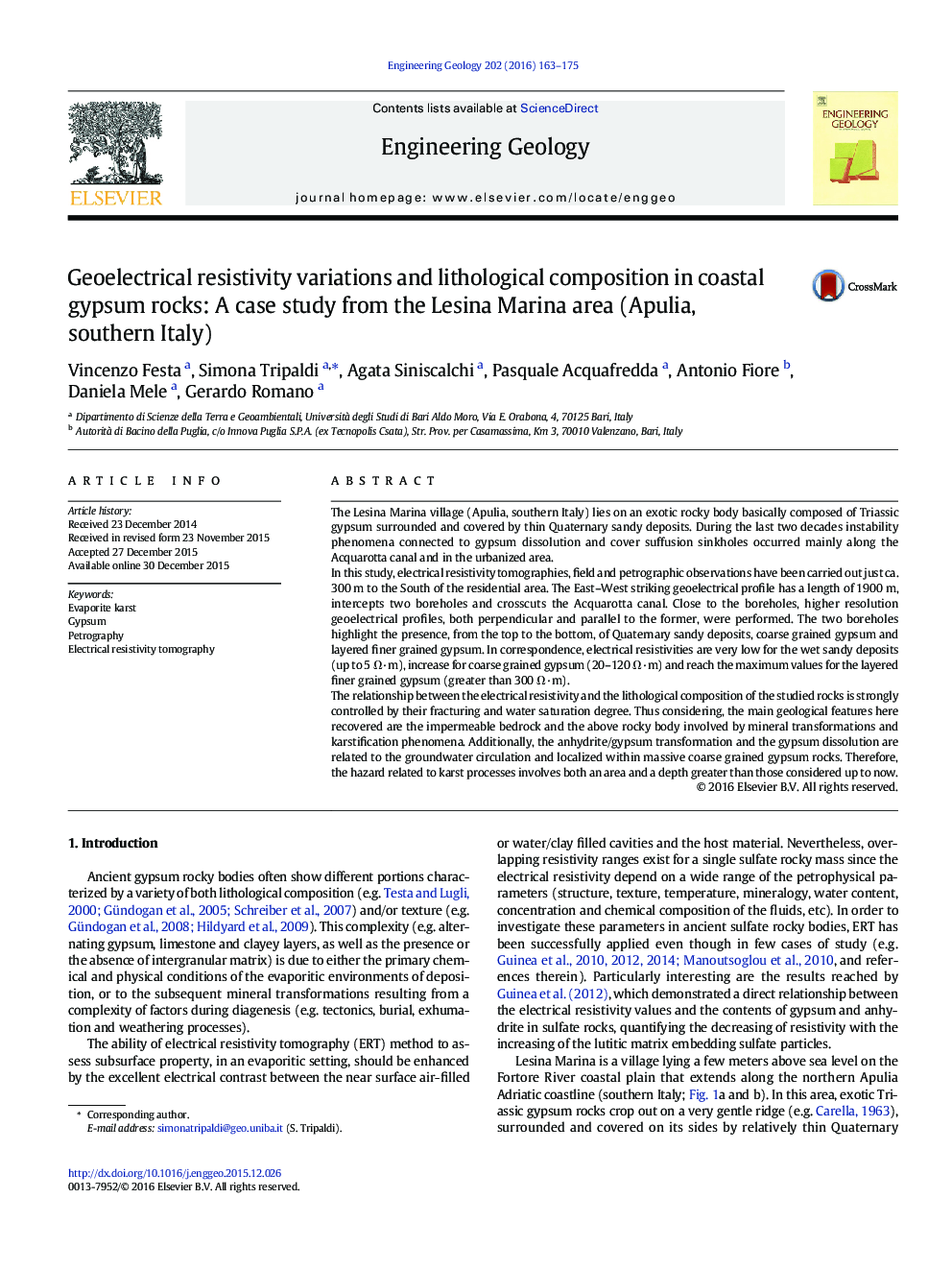| کد مقاله | کد نشریه | سال انتشار | مقاله انگلیسی | نسخه تمام متن |
|---|---|---|---|---|
| 4743182 | 1641783 | 2016 | 13 صفحه PDF | دانلود رایگان |
• Resistivities are low for coarse grained gypsum and high for finer grained gypsum.
• Resistivity–lithology relationship is controlled by fracturing and water content.
• Gypsification and karstification occur mainly within massive coarse grained gypsum.
• The impermeable bedrock represents the edge for gypsification processes.
• Karst isn't restricted to the residential area, nor only in the first 30 m in depth.
The Lesina Marina village (Apulia, southern Italy) lies on an exotic rocky body basically composed of Triassic gypsum surrounded and covered by thin Quaternary sandy deposits. During the last two decades instability phenomena connected to gypsum dissolution and cover suffusion sinkholes occurred mainly along the Acquarotta canal and in the urbanized area.In this study, electrical resistivity tomographies, field and petrographic observations have been carried out just ca. 300 m to the South of the residential area. The East–West striking geoelectrical profile has a length of 1900 m, intercepts two boreholes and crosscuts the Acquarotta canal. Close to the boreholes, higher resolution geoelectrical profiles, both perpendicular and parallel to the former, were performed. The two boreholes highlight the presence, from the top to the bottom, of Quaternary sandy deposits, coarse grained gypsum and layered finer grained gypsum. In correspondence, electrical resistivities are very low for the wet sandy deposits (up to 5 Ω·m), increase for coarse grained gypsum (20–120 Ω·m) and reach the maximum values for the layered finer grained gypsum (greater than 300 Ω·m).The relationship between the electrical resistivity and the lithological composition of the studied rocks is strongly controlled by their fracturing and water saturation degree. Thus considering, the main geological features here recovered are the impermeable bedrock and the above rocky body involved by mineral transformations and karstification phenomena. Additionally, the anhydrite/gypsum transformation and the gypsum dissolution are related to the groundwater circulation and localized within massive coarse grained gypsum rocks. Therefore, the hazard related to karst processes involves both an area and a depth greater than those considered up to now.
Journal: Engineering Geology - Volume 202, 4 March 2016, Pages 163–175
